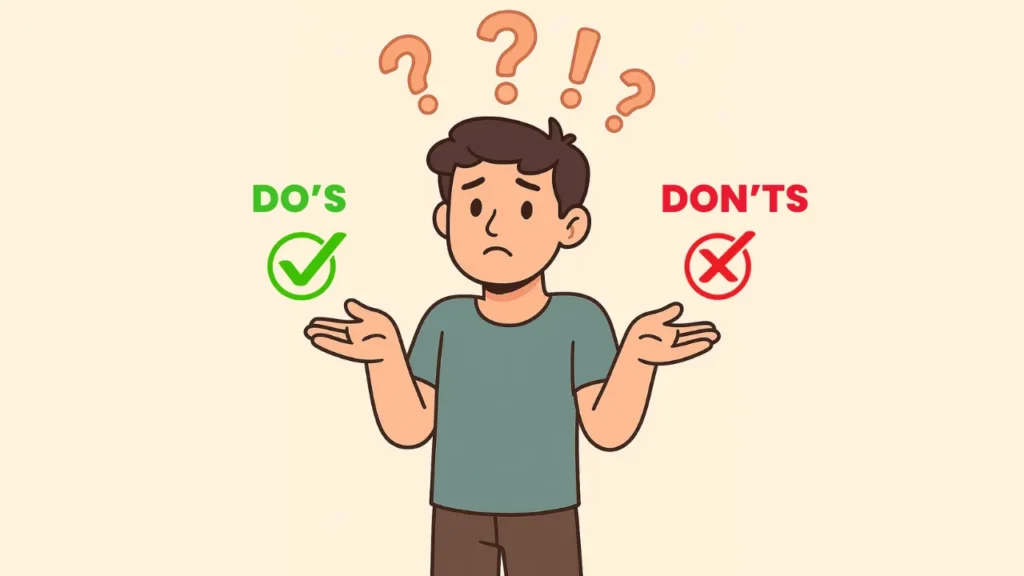How to Write a Script: Beginner’s Guide to Film Script Format

Script writing, or screenwriting, is the art of creating the blueprint for movies, TV shows, plays, ads, YouTube videos, and even video games. A script isn’t just dialogue—it also defines actions, scenes, and the story’s flow. Think of it as a roadmap for storytelling: without it, directors and actors wouldn’t know how scenes unfold or which emotions to capture.
For beginners exploring how to write scripts, the process may seem overwhelming. But once you understand the basics—such as how to type a script, the proper film script format, and the steps to writing a script—it becomes an exciting, creative journey. Tools like a digital storyboard maker or storyboarding app can also help visualise scenes before filming.
Whether you want to learn how to write a script for beginners or master how to write a movie script format, every great production starts with a powerful script. This guide will walk you through step-by-step instructions on how to write a script, explain the essential formatting rules, and share useful tips for beginners to help you start your journey as a scriptwriter.
Difference Between Normal Writing and Script Writing
| Aspect | Normal Writing (Novels, Stories, Articles) | Script Writing (Screenplays, Plays) |
|---|---|---|
| Purpose | Written to be read directly by the audience. | Written as a blueprint for performance on screen or stage. |
| Style | Descriptive, detailed, includes inner thoughts and narration. | Direct, visual, and focused only on actions and dialogues. |
| Format | Flexible format with no strict rules. | Follows strict screenplay format (scene headings, action lines, dialogues). |
| Example | “It was a stormy night, and John felt lonely as he walked down the street.” | EXT. STREET – NIGHT Rain pours. Thunder rumbles. JOHN walks alone, coat pulled tight. |
| Length & Detail | Long, detailed descriptions of feelings, settings, and backgrounds. | Short, precise, only what can be seen or heard. |
| Audience | Directly for readers to imagine the story. | For directors, actors, and crew to create the performance. |

How to Write a Script: Step-by-Step Guide
Learning the steps to writing a script helps beginners turn ideas into structured stories with clear characters, dialogue, and scenes. Using AI tools like an AI character maker can make the process easier by visualizing the flow before writing. With the right format and practice, anyone can craft engaging scripts that bring stories to life. Here are the steps to writing a script.
1) Develop Your Idea
Goal: Define what your story is about and why it matters.
- Pick a genre: drama, comedy, thriller, or romance.
- Clarify the premise: a 1–2 sentence setup that captures your story.
- Decide the theme: what your story says about life.
- Identify stakes: what your characters can win or lose.
Quick test: If you had only 30 seconds, could you explain your idea clearly? If not, simplify.
2) Create Characters
Goal: Build memorable characters the audience will root for—or against.
- Protagonist: clear goal (want) + inner need (what they must learn).
- Antagonist: actively blocks the goal (not just “bad,” but standing in the way).
- Character Arc: show how your hero changes from start to finish.
- Relationships: allies, mentors, and rivals—each should challenge your hero.
Mini worksheet: Name • Goal • Fear • Strength • Flaw • Choice at Climax
3) Write a Logline & Short Synopsis
Goal: Summarize your story in a single sentence.
- Logline formula: When [protagonist] faces [major problem], they must [goal] before [stakes]—despite [biggest obstacle].
- Synopsis (½–1 page): cover beginning, middle, and end. No dialogue—just story.
Example logline: A shy coder must expose her company’s AI fraud before launch, or millions will lose their privacy forever.
4) Outline the Story
Goal: Map the journey before you write.
- Act 1 (Setup): introduce the world, characters, inciting incident, and turning point.
- Act 2 (Confrontation): obstacles rise, midpoint twist, and major crisis.
- Act 3 (Resolution): climax and aftermath (new normal).
Beat checklist: Inciting • First Threshold • Midpoint • Bad Turn • Crisis • Climax • Aftermath
5) Build a Scene List
Goal: Make sure every scene drives the story forward.
For each scene, note:
- Location & Time: INT./EXT., DAY/NIGHT
- Objective: what the protagonist wants in the scene
- Conflict: who/what opposes it
- Turn: how the scene ends differently than it began
- Link: how it connects to the next scene
Pro Tip: Enter late, exit early. Cut anything that doesn’t change something.
6) Start the First Draft
Goal: Get to FADE OUT with momentum.
- Write forward—don’t polish yet.
- Read dialogue out loud to hear flow.
- Aim for 3–5 pages daily.
- Tools for how to type a script: Final Draft, Fade In, Arc Studio, Celtx, WriterDuet, Highland, or even Google Docs with proper formatting.
7) Use Proper Film Script Format
Goal: Make your script look professional.
This section answers “how to write a movie script format” and “proper film script format.”
- Font: Courier 12 pt
- Page count: 90–120 pages (1 page ≈ 1 minute)
- Margins: ~1.5″ left; ~1″ right/top/bottom
- Scene Heading (Slugline): INT./EXT. LOCATION – DAY/NIGHT
- Action Lines: present tense, only what can be seen/heard
- Character Names: CAPS, centered above dialogue
- Dialogue: standard indentation under the name
- Parenthetical: (beat), (whispering)—used sparingly
Transitions: optional, right-aligned (CUT TO:, FADE OUT:)
Example:
FADE IN:
INT. COFFEE SHOP – DAY
SARAH (30s) stares at her buzzing phone. She silences it, breathes.
SARAH
(whispering)
He’s late again.
The door chimes. JAKE rushes in, drenched.
JAKE
I can explain—
CUT TO:
Don’ts: avoid camera angles (unless vital), long paragraphs, or novel-style prose.
8) Revise & Edit
Goal: Turn your draft into a polished script.
- Story logic: tighten cause → effect.
- Character pass: sharpen goals, arcs, and stakes.
- Dialogue pass: cut clichés, make voices distinct.
- Pacing pass: shorten scenes, trim excess.
- Visual pass: show through action, not thoughts.
- Consistency: check names, locations, and timeline.
Rule: If it doesn’t reveal character or move the story forward—cut it.
9) Get Feedback
Goal: Test clarity and emotion.
- Host a table read with friends/actors.
- Ask: Where did you get confused? Which scenes dragged? What hit hardest?
- Prioritize notes about clarity, motivation, and stakes.
10) Finalize Your Script
Goal: Make it submission-ready.
- Title page: Title • Written by • Contact info
- Proofread: spelling, formatting, names
- File name: TITLE_YourName_vFinal.pdf
- Optional: register with Writers’ Guild or the copyright office
- Keep a logline and a one-page synopsis for pitching.
Film Script Format Guide: Standard Script Formatting Rules Explained
If you want to learn how to write scripts and follow the proper film script format, these are the essential rules every beginner should know:
Scene Heading (Slugline)
- Written in all caps.
- Indicates location and time of the scene.
Action Lines
- Describe only what the audience can see and hear.
- Keep them clear, direct, and written in the present tense.
Character Names
- Always appear in capital letters.
- Placed above the dialogue line.
Dialogue
- Indented under the character’s name.
- Short, natural, and easy to read.
Parentheticals
- Optional notes about how a line should be delivered.
- Used sparingly for clarity.
Transitions
- Instructions like FADE IN, CUT TO, or FADE OUT.
- Aligned to the right side of the page.
Following these rules helps you maintain a professional and industry-standard movie script format.

Do’s and Don’ts of Script Writing
| Do’s (Best Practices) | Don’ts (Mistakes to Avoid) |
|---|---|
| Follow proper film script format (Courier 12 pt, margins, scene headings, dialogue) | Don’t ignore formatting rules—unprofessional scripts get rejected quickly |
| Show, don’t tell—use visuals and actions | Don’t write like a novel (avoid inner thoughts and heavy narration) |
| Keep dialogue natural and realistic | Don’t overload dialogue or write long speeches |
| Introduce characters clearly (CAPS + short description) | Don’t introduce too many characters at once |
| Start with a strong opening scene to hook readers | Don’t begin with slow, boring exposition |
| Outline the story before writing (three-act structure, beats) | Don’t repeat information the audience already knows |
| Revise and polish multiple drafts | Don’t rush to submit your first draft |
| Read professional scripts to learn style and pacing | Don’t write camera directions (leave that to the director) |
| Keep every scene purposeful (reveal character or move the story forward) | Don’t drag out scenes—enter late, exit early |
| Write visually (focus on what can be seen/heard) | Don’t forget conflict—every scene needs tension or obstacles |
FAQs about How to Type a Script
1. What is script writing?
Scriptwriting is the process of creating the blueprint for movies, TV shows, plays, ads, or videos, including dialogue, character actions, and scene details.
2. How to write scripts as a beginner?
Start by understanding story structure, characters, and basic formatting. Practice small scripts before moving to larger projects.
3. What is the proper film script format?
Film scripts use industry-standard formatting: scene headings, action lines, character names, dialogue, and transitions.
4. How to type a script correctly?
Scripts should be typed using standard fonts like Courier (12 pt) with specific indentations for dialogue and action.
5. Do I need special software for script writing?
Yes, software like Final Draft, Celtx, or free tools can help maintain proper formatting.
6. What are the steps to writing a script?
Brainstorm ideas, outline your story, create characters, write the first draft, edit, and refine.
7. Can I write a script without experience?
Absolutely! Script writing for beginners is about practice, learning structure, and reading professional scripts.
8. How to write a movie script format for Hollywood?
Follow strict formatting rules, including clear scene headings, concise action lines, and professional dialogue style.
9. What’s the difference between normal writing and scriptwriting?
Normal writing describes events, while scriptwriting is visual and action-driven, designed for performance.
10. Is storyboarding necessary for scriptwriting?
Yes, creating a storyboard for animation or film helps visualize scenes before writing.
11. Can AI tools help in scriptwriting?
Yes, AI tools aid scriptwriting by generating dialogue, structuring plots, creating characters, and ensuring proper formatting using NLP and machine learning.
12. How long should a beginner’s script be?
Short films range from 5 to 20 pages; full-length movies are usually 90 to 120 pages.
13. How can Immersfy help with script writing?
Immersfy provides tools and guides for beginners learning how to write a script effectively.
14. Should I read professional scripts before writing?
Yes, reading scripts from IMDb or SimplyScripts helps you understand flow and structure.
15. What mistakes should beginners avoid in script writing?
Avoid over-describing, forced dialogue, weak characters, and ignoring proper film script format.
